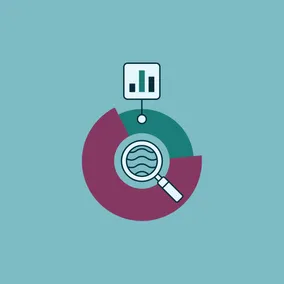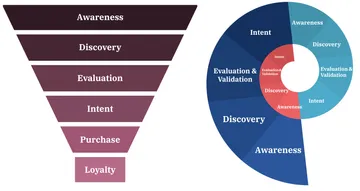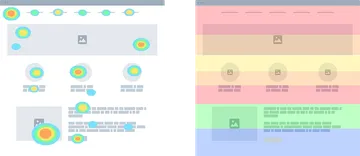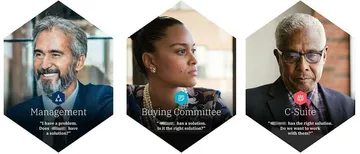Don’t Skip the Research

Assumptions are always risky. Did you guess correctly? Why did it work? Why didn't it? To build a solid foundation for your website, always include research and discovery in your process.
Whether your website costs $50 or $5 million, it’s an investment. It’s the front door to your business and may be the only impression someone ever has of your company. So why would you leave something so valuable to chance?
The research and discovery process is your foundation. It’s one of the most essential parts of building a website — whether designing it from the ground up or as part of a redesign. Without the insights we gain through a dedicated discovery process, there are holes in that foundation that end up filled with potentially costly educated guesses and assumptions.
And you know what they say about assumptions.
So, to remove those assumptions and guesses, we need to understand how people interact with your website:
Is your current website helping to meet your goals?
What are your customers actually doing on your website?
How can you plan to make your website meet your needs?
A research and discovery phase can help answer those questions, saving you time, effort, and money in the long run.
How are you using your website?
We start the research and discovery process by finding out more about your business. Your company might already have tons of research and insights into your products and services — what you do and what sets you apart. We’ll quickly familiarize ourselves with that research and expand on it with more website-specific insights.
Stakeholder interviews are one way we gather qualitative information from the people who work on your website and key employees who are most affected by your website content. We usually spend a half-hour to an hour each with them to learn more about what requirements they have, how the website fits into their work, what is working on the current website, and what isn’t.

When a broader group of stakeholders needs to be involved, stakeholder surveys are a great way to get more quantitative data. This is an especially good option for companies with a lot of employees who have goals tied to the website or work on the website as part of their role.
We can also perform a content audit to learn more about what content you have on your website, the purpose of that content, how that content is grouped, what those groups are called, and where that content lives on the website. Sometimes that content audit might get really into the weeds so we can learn more specifically about how content decisions are made on your website, what your content calendar looks like, and how that content actually gets on the website.
Understanding your website KPIs helps us know what data to evaluate to get accurate baselines to compare with future website changes. So, we will also talk about the specific quantitative goals for your website and how you are currently measuring success.
If you have multiple websites or integrations on your website — like Salesforce, Marketo, Shopify, Greenhouse, Lever, YouTube, Vimeo, or a DAM — we can build an ecosystem map to show where they fit into your website and how they all work together.
How are your customers using your website?
Understanding what you know about your company and what you want from your website is a great place to start. But it doesn’t answer all of the questions we have about your website. We really need to dig deeper and see what is actually happening with your website and understand what that means for your company. There are several ways we can get that kind of information.
Analytics are a great way to see if your customers are going to your website from an email, a search, or an ad. They can show what pages your customers are looking at, how they are moving through the website, what they are clicking on, and what pages they are leaving from. We can get additional quantitative data using heat mapping tools that help us understand what kind of content people are focusing on. Click maps show the things people are clicking on, and scroll maps show how far down on a page your customers are going.

Session recordings can record user actions — like mouse movements, clicks, and scrolling — to reproduce a session that you can view without any personal information being collected. These can be used in quantitative and qualitative analysis since you can see the session data in aggregate and individually.
But what we love the most is conducting user interviews. They give us a chance to actually talk to your users to find out more about their experiences with your website. We can talk through how they learned about the website, what information they want, what they call it, when they want to see it, how it’s presented, if something worked well or was confusing, and what factors go into their decision-making process.
What’s the plan for your new website?
Once we have information from both your stakeholders and your users, we can produce some resources that will help guide our decision-making for the website in the future.
A competitive analysis helps us understand what your top competitors are doing: what content they have, how they organize it, and what they are calling that content. Since every company is different, we aren’t trying to copy what your competitors are doing. We just want to know more about what might be considered industry standard and what people might be expecting to see on your website.
We can develop audience profiles or personas that tell us more about your different types of customers. They let us know which customer groups need specific information and which customer groups might need different information.

Why is discovery important?
Once we have analyzed all the research and discovery data we've collected, we can start building your new website on a strong, well-supported foundation — one that balances your business goals with your users’ needs so it works best for everyone involved.
The benefits of research and discovery don’t end with the launch of your new website. Knowing the “why” behind your decisions lets you understand when and how to iterate and optimize your website in the future. If something works well, you know why and can duplicate it in other places. If something doesn't seem to be working, you can narrow down the reason and try something else.
TL;DR — It is necessary to deeply understand your company, your users, and how they specifically interact with your website so that we can provide everyone with the best overall experience. Without research, you’re building your house on a shaky foundation — you can’t be sure if or when it might all fall down. And nobody wants to go through the whole process all over again next year! Don’t skip the research.
